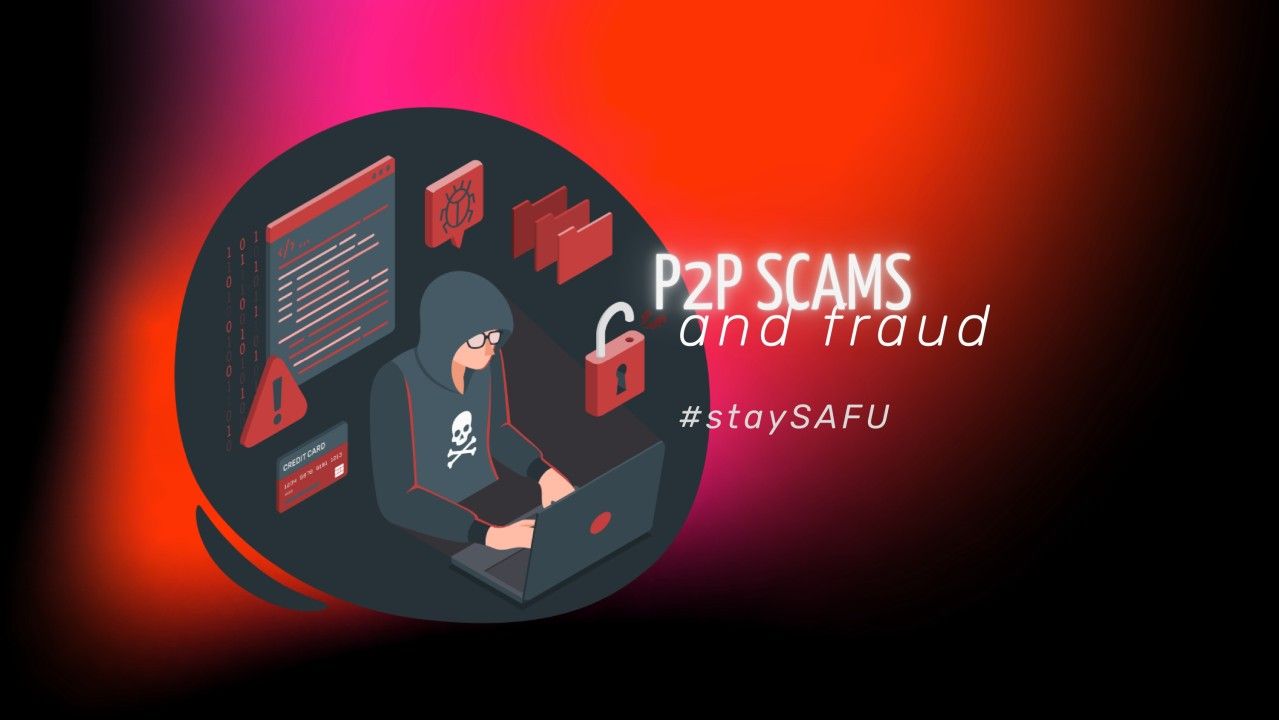The rise of P2P scams on Binance has rang an alarm bell within the crypto trading community, especially in transactions involving USDT. It’s scary that what appears to be a routine transaction can swiftly turn into a nightmare, as deceitful buyers exploit system loopholes, leaving unsuspecting sellers at risk.
Let’s join FMCPAY to explore how these P2P scams on Binance operate, their devastating impact, and how traders can protect themselves from falling prey.
1. Quick Overview of P2P Transfers on Binance
Peer-to-peer (P2P) transactions on Binance allow users to trade cryptocurrencies directly with each other without the need for an intermediary. Traders can list their offers to buy or sell, and other users can accept these offers to complete the trade. Binance also provides an escrow service that temporarily holds the cryptocurrency during the transaction, ensuring that both parties fulfill their obligations before releasing the funds.
Binance’s P2P platform supports various payment methods, making it convenient for users worldwide. However, this flexibility also presents opportunities for scammers. Traders must remain vigilant and informed about the common P2P scams on Binance to protect themself.
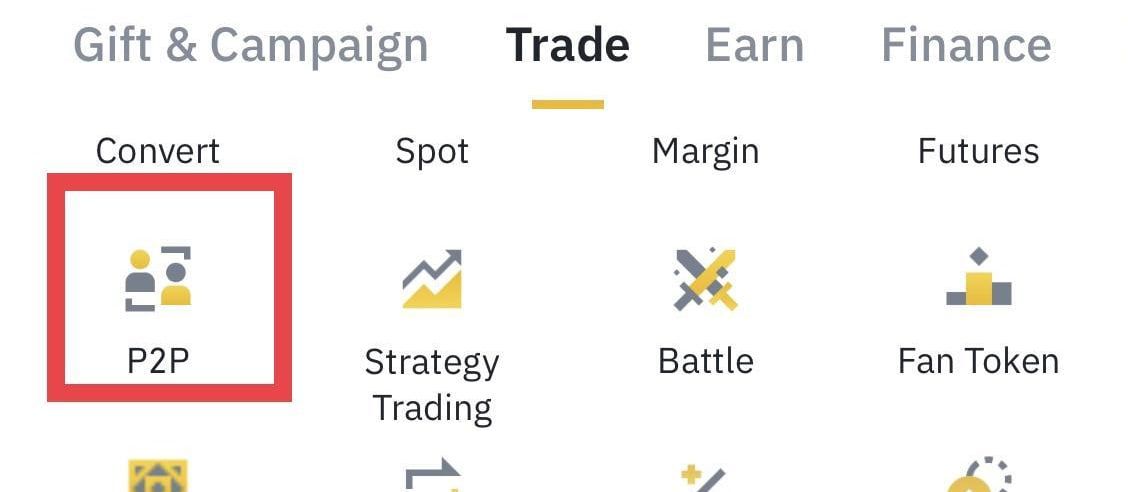
2. Top 5 Common Crypto P2P Scams on Binance
P2P trading is inherently risky, as it involves dealing with unknown parties. To mitigate these risks, it is essential to recognize common scam tactics and implement safety measures. Here are five of the most common P2P scams on Binance and tips to avoid falling victim to them.
2.1. Proof of Payment Scams
Scammers often edit payment screenshots to falsely claim they have completed a transaction. They pressure victims into releasing funds or digital assets without verifying that payment has been received.
SMS scams are another common form of proof of payment scam, where fraudsters send the seller text messages that resemble notifications from banks or wallet apps. These messages falsely indicate that the victim has received a payment from their counterparty.
To protect yourself from proof of payment P2P scams on Binance, consider the following steps:
- Verify Payment Receipt: Always check your bank account or e-wallet to confirm the receipt of funds before marking a transaction as complete.
- Be Cautious: If your counterparty urges you to release funds before confirming the payment, approach the situation with skepticism.
- Avoid SMS Scams: Always verify the receipt of funds by checking your bank account or crypto wallet directly instead of relying on text message notifications.
Read more: Proof of Payment Scams: Key Warning Signs & How to Avoid
2.2. Man-in-the-Middle (MitM) Scams
In a Man-in-the-Middle scam, a fraudster poses as a reputable merchant on platforms like Binance, KuCoin, or Bybit. They reach out to victims through external channels such as Telegram, WhatsApp, or social media, providing their bank account details and a link to a P2P ad. The scammer asks the victim to confirm these details by copying them into the order page’s P2P chat.
Unknowingly, the victim shares the scammer’s bank account information with an unrelated buyer on a crypto P2P platform, who is also unaware of the scam. The victim then releases crypto to this buyer, who transfers their payment to the scammer’s account instead.
In such cases, reversing the transaction or seeking intervention from customer service is impossible. Since the victim communicated with the fraudster through external channels and transferred funds to an unrelated account, Binance’s customer support cannot assist.
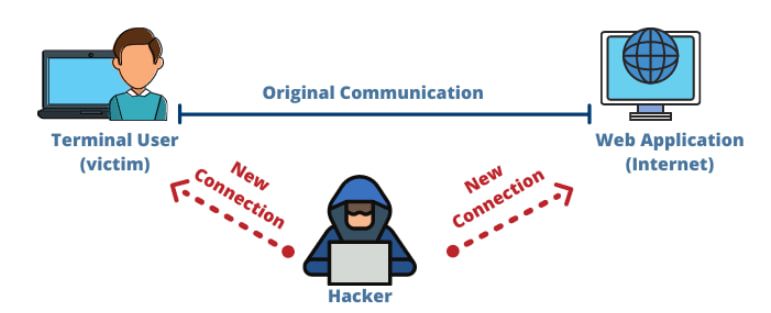
To safeguard yourself from MitM P2P scams on Binance, follow these guidelines:
- Chat Within the P2P Platform: Always engage in transactions solely on the designated P2P platform and avoid external communication.
- Remind Buyers About Policy Violations: Inform buyers that third-party transfers are against P2P transaction policies.
- Verify Bank Account Details: Double-check the counterparty’s bank account information directly on the crypto exchange platform.
- Skeptical of External Offers: Do not trust offers or information obtained from external channels when conducting P2P trades.
2.3. Refund Scams
This scam is deceptively simple yet causes significant damage. It begins with a buyer initiating a P2P trade on Binance, agreeing to purchase USDT from a seller and promising to transfer the payment to the seller’s local bank account. Once the payment is made, the buyer swiftly marks the transaction as complete on Binance, gaining control of the seller’s USDT.
The twist comes after that when the buyer contacts their bank, filing a fraudulent complaint that the payment was made in error. As a result, some banks may freeze the seller’s account or even reverse the transaction. This leaves the seller deprived of both their funds and the transferred USDT, resulting in a double loss.
Keep these tips in mind to avoid falling victim to refund P2P scams on Binance:
- Always Keep Documentation: Keep detailed records of all transactions, including payment confirmations, chat history, and transaction IDs. This evidence can be crucial for disputing claims if a scam arises.
- Trade Only with Verified Users: While not entirely foolproof, trading with well-rated and verified users on Binance can help reduce the risk of falling victim to a scam.
- Avoid Suspicious Payment Methods: If a buyer pushes for cheque payments, treat it as a potential scam indicator and promptly initiate an appeal to protect yourself.
2.4. Binance Imposter Scams
In this type of scams, fraudsters impersonate employees of Binance to deceive users and steal their funds. They may contact potential victims through unofficial emails or social media accounts, requesting personal information and initiating fraudulent transactions.
Scammers could ask you to share your email address in the P2P chat window, claiming that the Binance’s P2P escrow service requires this information to confirm payment. They may then send you a phishing email that resembles official communication from the Binance, tricking you into releasing your crypto before you receive payment.

To protect yourself from imposter P2P scams on Binance, follow these precautions:
- Never Complete Transactions via Email: Binance will never ask you to finalize a P2P transaction through email. Always release funds only after confirming payment through the P2P platform.
- Avoid Sharing Personal Information: Do not share personal or offline contact information in the chat.
- Verify Payment Methods: Ensure that payments are made using the counterparty’s specified payment method and that the account name matches the verified name on the Binance.
- Be Wary of External Offers: Remain cautious of offers or information received through unofficial channels.
- Use the Official Verification Center: Check the Binance’s Official Verification Center to confirm the authenticity of any communications or channels.
2.5. Triangle Scams
Triangle scams involve two scammers simultaneously placing orders with the same seller, exploiting the seller’s trust and urgency to release funds without proper verification. Here’s how triangle P2P scams on Binance typically unfolds:
Scammer A places an order for 5,000 USDT worth of crypto (Order A), while Scammer B places a larger order for 6,000 USDT (Order B). Scammer B transfers 5,000 USDT to the seller. At the same time, Scammer A marks Order A as paid, prompting the seller to release the crypto to Scammer A, thus completing Order A for 5,000 USDT.
Scammer B then sends an additional 1,000 USDT to the seller, provides proof of the initial 5,000 USDT payment they received from Scammer A, and pressures the seller to release the digital assets under Order B.
Users conducting triangle scams aim to pressure sellers into releasing funds immediately without verifying the transfer. This can lead to a situation where funds are released twice, resulting in the seller receiving half or less of the assets they intended to buy.
To avoid falling victim to triangle P2P scams on Binance, ensure that you:
- Confirm Receipt of All Funds: Verify that you have received all funds from pending P2P transactions before releasing any assets.
- Be Cautious with Proof of Payment: Scrutinize any proof of payment provided by counterparties, as scammers may attempt to reuse these documents.
3. How to Report P2P Scams on Binance
Reporting P2P scams on Binance is crucial to protecting yourself. As the top CEX in the crypto realm, Binance offers multiple ways to report scams, ensuring that users can get the help they need while maintaining a safe trading environment. Here’s a quick guide on how to report P2P scams on Binance effectively.
3.1. Via the Chatbox
The chatbox in Binance’s P2P feature allows users to communicate directly during a transaction. It also serves as a useful tool for reporting suspicious activity while the trade is in progress.
If you notice any suspicious behavior, such as a user making unusual requests, tap [Report] in the chatbox to report it directly. Binance monitors these communications, and this can serve as evidence if a dispute arises.
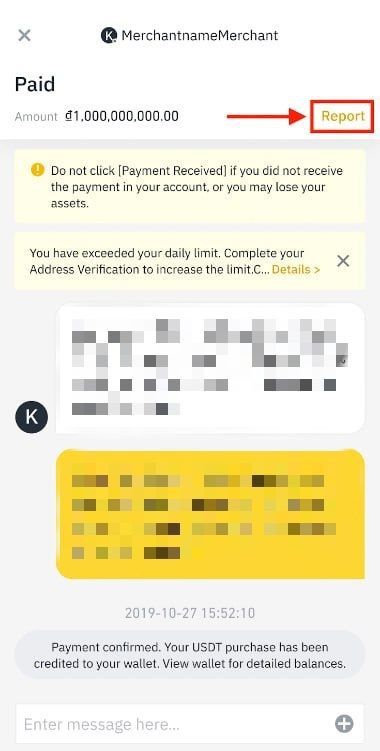
3.2. Via the Transaction Details
If you suspect a scam after a transaction, you can report the issue directly through the transaction details section.
Go to the details page of the P2P transaction in question. This can be found in the “Order History” section of your Binance account for example. Click [Report Scam] to alert Binance’s support team to the issue and initiate a review of the trade.
Attach any supporting evidence, such as payment receipts, screenshots, and communication logs. The more information you provide, the easier it will be for Binance to resolve the issue.

3.3. Via the User Profile
Another way to report a scam is through the profile of the user suspected of fraudulent activity. This method helps flag potentially malicious accounts.
Go to the user profile, click on [Report] to flag the account as suspicious. Please note that you can only report merchants or users you have traded with. To report other merchants or users, please use Binance Chat instead.
Binance will ask you the order number and other details related to suspicious transaction. The more you described, the easier they will be to assist you.
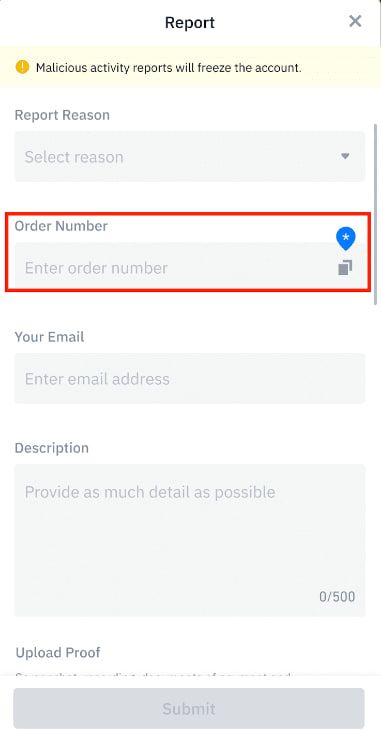
3.4. Via the Binance Support
For more complex issues or unresolved disputes, reporting P2P scams on Binance Support may be necessary. Visit the Binance website or app and access the “Support” or “Help Center” section.
Explain what happened, including the date, time, and any relevant context. Attachany evidence you have gathered, such as screenshots, payment confirmations, or chat logs. Be as specific as possible about the nature of the scam. Binance’s support team will review your case and may reach out for additional information if needed.
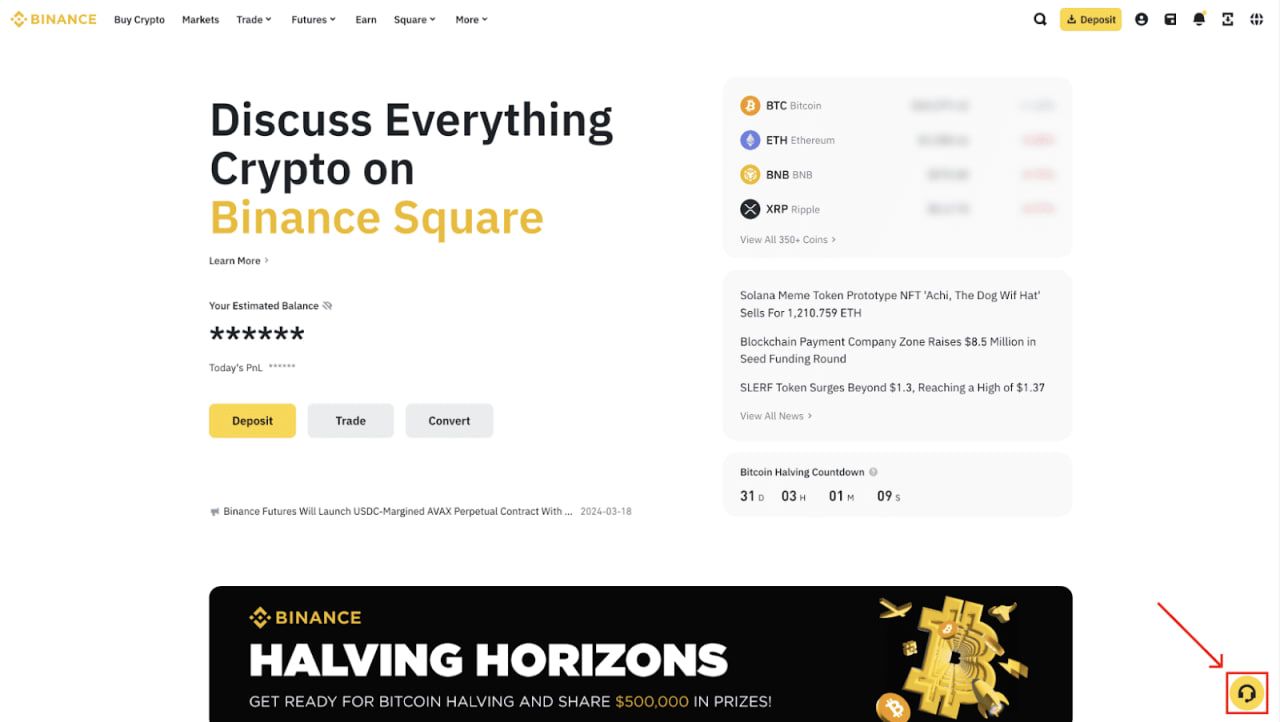
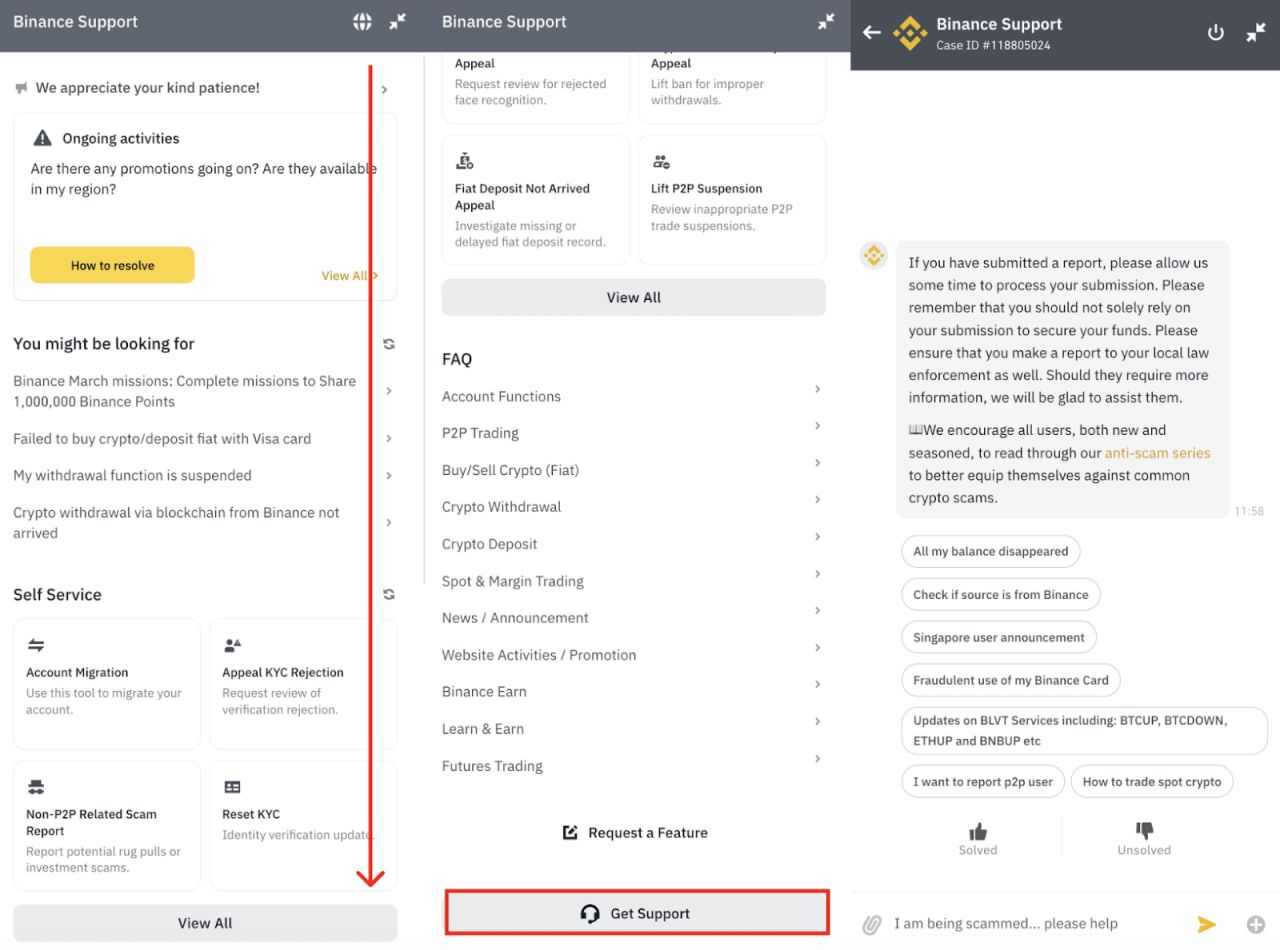
Conclusion
While P2P transactions offer convenience, it’s essential to be aware of the common P2P scams on Binance and take necessary precautions to protect yourself. By understanding how these scams work and following the provided security tips, you can minimize the risk of falling victim to fraud in the crypto market.
Keep up with more helpful crypto insights from FMCPAY to stay vigilant and informed about the latest trends and security practices.

